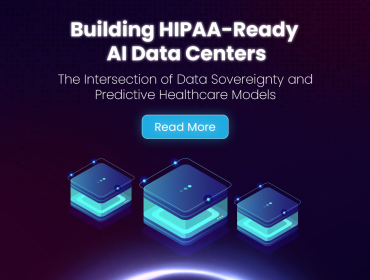Introduction
In the higher-education and research ecosystem, establishing cost-efficient AI clusters that can scale rapidly, manage maintenance overheads and deliver predictable outcomes is no longer optional, it’s strategic. Stakeholders in university data centres and campus-based research facilities must pivot from ad-hoc GPU additions to orchestrated, pod-based architectures that leverage containers, orchestration frameworks and MLOps tooling. This article focuses on how to build such “research pods” using Kubernetes and MLOps pipelines, within data-centre infrastructure, to optimize resources and align cost and research velocity.
1. Why Research “Pods” and Container Orchestration Matter
The surge in AI and ML workload complexity means that traditional cluster provisioning, bare-metal, monolithic designs, is increasingly inefficient. For example, global demand for data-centre capacity could almost triple by 2030, with about 70 % of that growth coming from AI workloads. (Source: McKinsey)
In this context, research pods, self-contained, modular clusters comprising compute (GPUs or accelerators), storage, networking and orchestration layers, deliver a repeatable unit that can be spun up, managed via policy, and retired when no longer needed. Using Kubernetes to manage the container layer gives flexibility: heterogeneous hardware, multi-tenant access, and orchestration of both training and inference workflows.
For stakeholders, the key benefits are:
- CapEx optimisation via modular scaling (pods can be deployed incrementally)
- OpEx predictability through policy-driven automation rather than manual provisioning
- Research throughput gains by reducing waiting time for resources
2. Designing the Pod Architecture for Education & Research
When building research pods in data centres, stakeholders must design both the hardware substrate and the software orchestration stack in tandem.
2.1 Hardware and infrastructure baseline
- Each pod should include a defined set of GPU/accelerator nodes, high-bandwidth interconnect (e.g., RoCE/RDMA fabrics) and shared storage services. For AI clusters, traditional Ethernet fabrics are giving way to rail-optimised low-latency fabrics to improve GPU utilisation.
- Given energy and cooling demands, remember: AI data-centre power usage is ballooning. One study indicated global electricity demand from data centres could double between 2022 and 2026, driven by AI. (Source: MIT Sloan)
- Efficiency measures, e.g., modular containerised data-centre units, allow incremental deployment and align capital spend with actual utilisation.

2.2 Kubernetes and MLOps stack
- Deploy Kubernetes clusters inside each pod (or across pods) to abstract hardware and enable consistent container orchestration.
- On top of Kubernetes, build an MLOps layer: versioned pipelines, model registries, automated retraining and inference deployment.
- Use namespace segmentation to partition units (for departments, labs, multi-tenant usage) and enforce quotas, scheduling policies and resource isolation.
2.3 Pod lifecycle management
- Define pods as templated infrastructure units: hardware profile + network fabric + Kubernetes stack + MLOps service layer.
- Enable dynamic scaling: add or remove pods based on semester cycles, research bursts or project timelines.
- Use telemetry and cost-analytics to track hardware utilisation, energy consumption and research throughput as part of governance.
3. Cost-Efficiency and Stakeholder Considerations
For decision-makers, cost efficiency isn’t just about lower capital, it’s about aligning infrastructure spend with research outcome and reducing risk of stranded assets.
3.1 Aligning spend with demand
By deploying pods incrementally rather than provisioning large monolithic clusters upfront, institutions avoid over-investment and under-utilisation. The McKinsey research estimated that by 2030, AI-capable data-centre investment will require US $5.2 trillion for AI workloads alone. (Source: McKinsey)
Deploying pods means you only expand when you have validated demand and capacity utilisation, thus improving ROI.
3.2 Optimising utilisation through orchestration
Kubernetes offers scheduling, autoscaling and resource compartmentalisation. Through MLOps workflows, you can enforce idle-resource consolidation (e.g., training tasks can be queued when pods are lightly loaded) and therefore reduce wasted cycles and power draw.
3.3 Managing sustainability and operational cost
Research shows cooling systems and idle server consumption are major cost drivers in AI-intensive data centres.
By orchestrating pods with policy (e.g., powering down under-utilised nodes, shifting workloads to cooler locales), and by designing for modularity and reuse, stakeholders can reduce both energy cost and carbon footprint.
4. Implementation Roadmap for Institutions
Here’s a high-level roadmap tailored for university or research-centre stakeholders looking to implement pod-based AI clusters.
Phase 1: Define the pod template
- Identify standard hardware specification (e.g., X GPU nodes, Y TB storage, Z Gbps interconnect).
- Define software baseline: Kubernetes version, container runtime, MLOps stack (pipeline tooling, monitoring, model registry).
- Define quotas and policies for usage, tenancy, cost-allocation.
Phase 2: Pilot one pod
- Deploy a full pod instance, ideally aligned with an upcoming semester-or project cycle.
- Run typical research workflows through it: dataset ingestion, model training, inference deployment and decommissioning.
- Collect telemetry: utilisation, power draw, scheduling latency, job queue wait-time.
Phase 3: Operate and measure ROI
- Use telemetry to compute research-throughput per pod, cost per training hour, idle time percentage.
- Develop charge-back or cost-allocation models for departments or labs.
- Adjust policies: e.g., schedule maintenance windows, automatic scaling up/down, node retirement thresholds.
Phase 4: Scale out
- Based on metrics, replicate the pod template across the data-centre floor or modular units.
- Introduce multi-pod orchestration: federated Kubernetes clusters, namespace federation, workload mobility across pods for larger experiments.
- Integrate with campus-wide scheduling and identity systems for multi-tenant usage.
5. Strategic Implications for Stakeholders
For institutional stakeholders, IT directors, CFOs, research deans, the pod-based orchestration strategy carries several strategic implications:
- Reduced capital risk: Instead of large upfront spend, you deploy incrementally and validate performance before replicating.
- Enhanced research agility: Pods enable faster provisioning of AI clusters for research teams, not weeks or months of lead-time, but hours/days.
- Better cost-transparency: With telemetry and standardised templates, cost-allocation across departments becomes tractable.
- Sustainability alignment: Modular deployment and orchestration permit energy-aware scheduling, reuse of hardware and better alignment with institutional sustainability goals.
- Scalability with governance: Kubernetes and MLOps frameworks provide the governance, auditability and policy control that academic institutions require (e.g., multi-tenant isolation, data-sensitivity compliance, scheduling fairness).

Conclusion
Orchestrating AI clusters in education isn’t about simply “buying more GPUs”, it’s about building modular, managed research pods that align hardware, orchestration and operational policy into a repeatable, efficient unit. Leveraging Kubernetes and mature MLOps tooling within a data-centre environment allows institutions to scale AI research capacity with cost discipline, agility and sustainability. For stakeholders committed to enabling AI-enabled research, this approach offers a clear roadmap from pilot to production-grade infrastructure, with transparency, control and measurable ROI.












